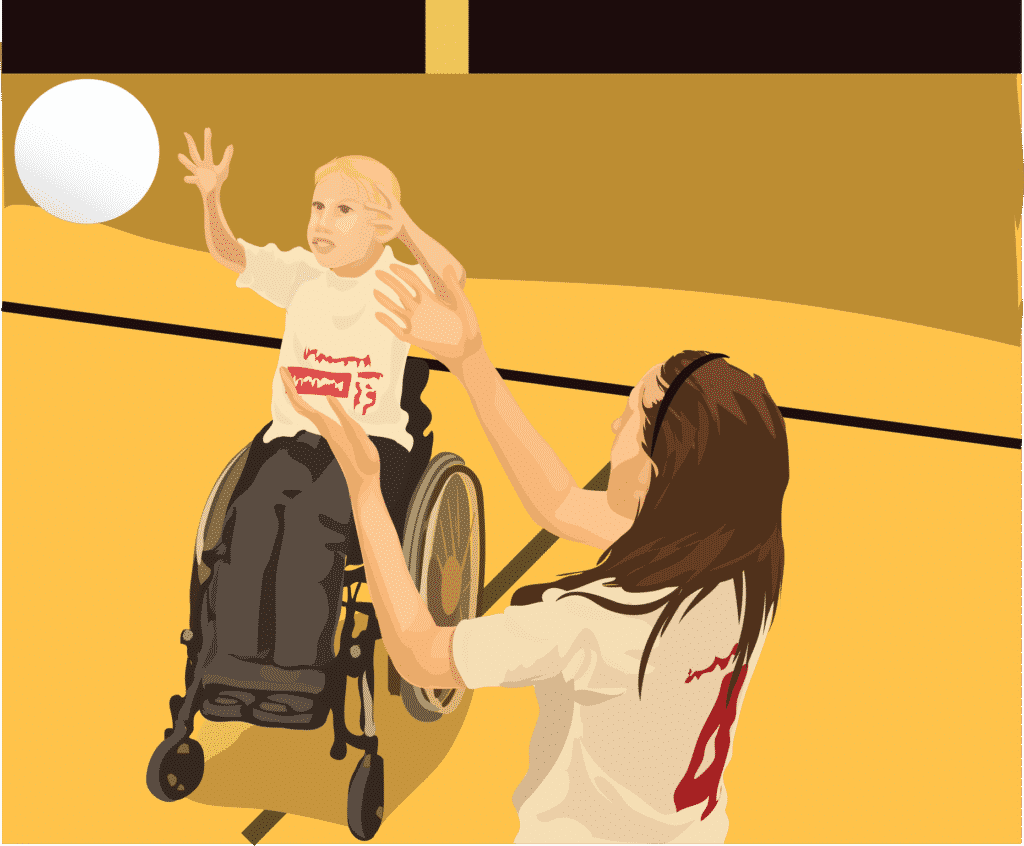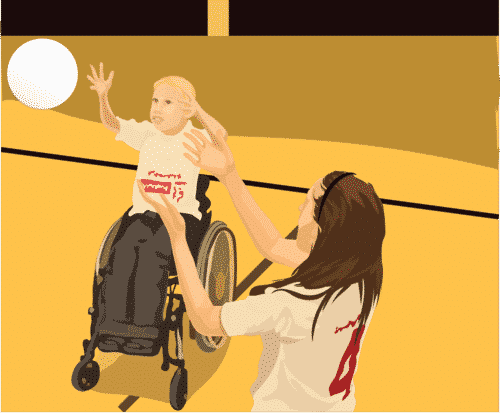Over the last few decades, UNESCO and its collaborators have made it a priority to guarantee inclusion for all children in all levels of education around the world. In other words, it is their goal to ensure that all children have the right to benefit from education, without any discrimination, and regardless of location, race, age, socioeconomic status, and so on and so forth. In more recent years, they are also branching out and discussing ways in which children can experience complete inclusion in others areas of like, like employment, leisure, and sport. Today, we’ll focus a little more on “inclusion in sport”.

What does the term “Inclusion in Sport Mean?”
It’s difficult to argue that people with disabilities have less favourable experiences than most when it comes to sports. Children with disabilities face a great deal of barriers that limit their participation in sport. Some of these barriers are physical, while others are created by a lack of awareness and opportunity. Many people without disabilities have a difficult time understanding the barriers that people with disabilities face, and therefore have a difficult time involving them within a team. Other common barriers faced by individuals with disabilities include a lack of opportunity in sport, a lack of accessible facilities to play sport, and limited information to resources about sport.
“Inclusion in sport” then, would be the idea of breaking down these barriers, so that all children have equal opportunity to play sports, regardless of disability.
Does the term “Inclusion” mean the same thing in Education and in Sport?
Here is a definition of inclusion as quoted in Armstrong (2003), inclusion is, “about the participation of all children and you people, and the removal of all forms of exclusionary practice”.
Whether we are looking at educational inclusion, or inclusion in sport, the same definition holds true. In others words, inclusion is about ensuring that all children have equal opportunity in both education and in sports.
The difference between inclusion in education and inclusion in sport, however, is that education is a requirement, whereas participation in sport is often voluntary (with exception to mandatory Physical Education). In other words, if someone is not receiving an education, it’s because they are being excluded. But if someone is not playing in sports, it doesn’t necessary mean they are being excluded. Rather, it could just mean that they don’t have the desire to participate – because regardless of whether someone has a disability or not, not everyone wants to play sports.
In return, we must place the idea of inclusion in sports on an “inclusion spectrum”. The goal here then is not to ensure that all individuals with disabilities play sports, but is to assist individuals with disabilities to make an independent decision as to whether they want to engage in sports, as well as who they would like to play sports with.
Terming Individuals with Disabilities
How should we refer to people with disabilities? This is a question that has been up for debate for many years, and which is actually quite controversial. One of the reasons that this question is so controversial can be explained by the British Social Model, which states that a disability is not actually an attributable feature of individuals, but is something that is imposed upon the physically impaired by society (Finkelstein 1996). In other words, the limitations of individuals with disabilities are not real limitations, they are simply societal constructs. If this is the case, than any barriers faced by individuals with disabilities are not due to physical limitations. Rather, they are caused by the social environment in which they live.
Why is inclusion in sport so important?
It’s easy to understand why inclusion in education is so important, but why does inclusion in sport matter? Firstly, sports have a very social aspect to them. In return, being involved in sports is also a matter of social inclusion. When individuals with disabilities are excluded from sport, they are also being excluded from social opportunities. Secondly, there are many benefits of sport for anyone that participates in them. These benefits range from enhanced self-esteem, to improved physical and mental health. By excluding individuals with disabilities from sports, we are thereby excluding them from all of the benefits associated with sports.
The 5 Modalities of the Inclusion Spectrum
As we mentioned earlier, if you want to focus on inclusion in sport, you must do so on a spectrum. The inclusion spectrum is about considering the range of options that are available for those with disabilities, and then adapting these options to suit the needs, capabilities, and goals of each individual. Here are the 5 categories on the Spectrum, as defined by Black and Williamson (2011):
1) Separate Activity – Activities that have been specifically designed for individuals with disabilities.
2) Parallel Activities – This is when the individuals with disabilities and the non-disabled participate in the same type of sport, but train and play separately based on the ability level.
3) Disability Sport Activity – This is when both non-disabled and individuals with disabilities play a disability sport together, such as in the Paralympics.
4) Inclusive Activity – This is when everyone (both those with and without disabilities) plays the same sport, with minimal or no adaptations of the environment or equipment.
5) Modified Activity – This is when everyone plays the same sport, with adaptations to fit everyone’s needs and abilities.
The STEP Model
In addition to the spectrum, those looking to provide inclusion in sport should refer to the STEP Model, which refers to Space, Task, Equipment, and People. This model is designed for coaches, practitioners, teachers, etc, and provides a useful way for structuring sporting activities. Let’s take a closer look at the acronym:
Space – Increase or decrease the size of the playing area to suit different abilities.
Task – Break down complex skills into smaller components that everyone can learn (ie. in basketball, give everyone the chance to learn to dribble). All participants should have equal opportunity to engage in all tasks associated with the sport (ie. dribbled, passing, shooting, etc).
Equipment – Amend equipment to suit the needs of all players.
People – Balance team numbers according to the overall ability to the group.
Conclusion
In conclusion, the idea of “inclusion in sport” must be looked at on a spectrum scale. Not everyone has the same desire to play in sports, and so “inclusion” may look different for each individual. One individual may only feel comfortable or want to play in sports designed specifically for disabilities, while other individuals may seek the goal of complete inclusion. It is our job as a society to provide individuals with disabilities with the tools and resources to make an individual decision as to where they fit on the Inclusion Spectrum, and then to provide them the opportunity to do so.

